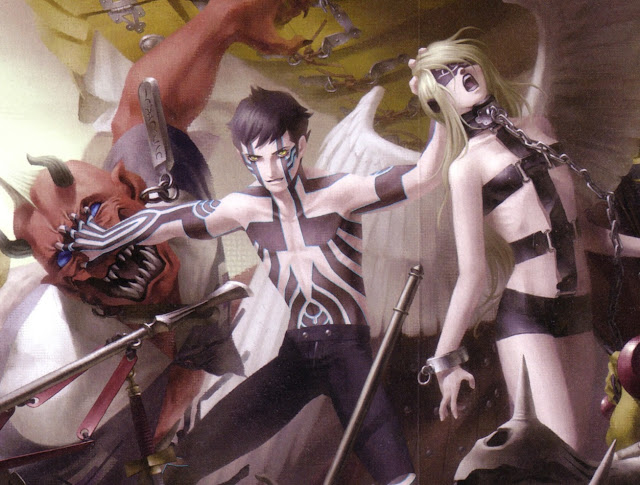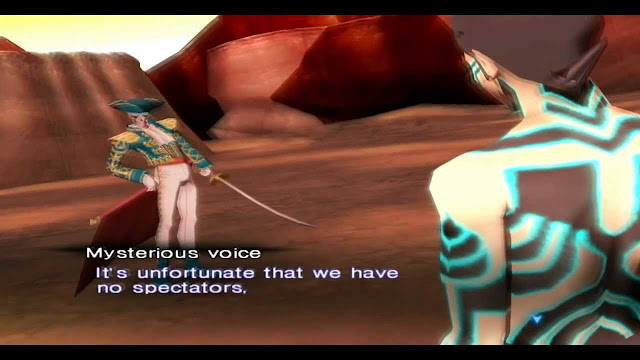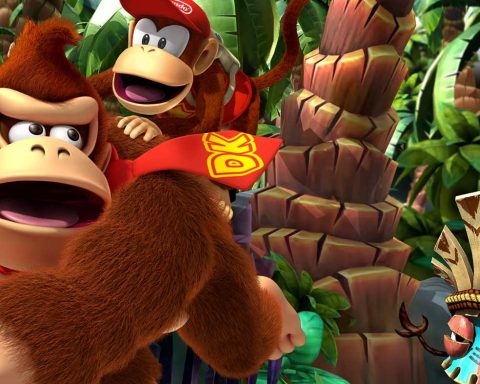Retro Reflections by Matt S.
Shin Megami Tensei: Lucifer’s Call (or Nocturne, depending on the country you hail from), is a very special game to me. It was, in fact, my first Shin Megami Tensei game, and would kick off a fascination I’ve had with the dark fantasy JRPG series forever after that. More importantly, however, purely as a point of pride, it was the first time that a review I had written had been quoted on a game box.
And I don’t even have that box any more, can you believe it? I bought myself a copy of the game purely as a trophy for that first milestone as a young game’s journalist, but sadly after a few moves of home, I still have a collection of PS2 games, but that isn’t one of them. I can’t even remember what the quote was, but I certainly was proud of it. If anyone still has that box, please snap a photo of the back and drop it in the comments. I’d love to remember what I wrote.
Back in those days I was just starting out in paid games writing. Having landed a freelance gig with the Australian Official PlayStation 2 Magazine, I got to drop in and review the occasional game from time to time. It quickly got established within the OPS2 team that I was a fan of Japanese games, and so I’d get tossed all the quirky “weird” games with minimal profile that was releasing on the PS2 at the time. It was a great time for JRPG fans in Australia because with the PS2 it was, for the first time, a time when we were in fact getting localised versions of those super-niche games. Before that very few JRPGs that were not called “Final Fantasy” got a release in Australia at any kind of scale.
So none of these games had any kind of real profile, and I suspect very few in Australia knew what “Shin Megami Tensei” was. Along with the likes of La Pucelle Tactics from NISA, and other games even I can’t remember, back in those days, Shin Megami Tensei didn’t exactly have the biggest profile in Australia. They were localised and released here many months after landing in the USA, and Atlus had nothing to do with the regional ports. It was all Ghostlight back in those days. So I had very minimal idea what I was even stepping into when the OPS2 editor handed me a copy of the game and told me to produce a half page review of the game. Yep, that’s right, I got a half page to work with for a JRPG of that size. Imagine an editor doing that to Persona 5 today? How times have changed.
But I digress. From the moment I sat down to play Lucifer’s Call I was blown away by it all. The hyperstylised cel-shaded graphics weren’t as detailed as what we were seeing in the likes of Final Fantasy X back in those days, but the art direction, portraying a dark apocalypse where the few humans that remained were prey for demons, was a very different JRPG to the kind of colourful, bright games that dominated the genre back in those days. The grungy style of combat and underground music soundtrack was incredibly appealing, too and, as a Pokemon fan, I was instantly sold on the ability to recruit the demons I was fighting into my army. That was something I hadn’t experienced much of outside of, well, Pokemon, back in those day.
It was atmospheric, is what I’m saying. There were screams of rage in combat. There was heavy synthesied music and rock guitars at play. I was also going through a phase where I’d watch The Crow on a weekly basis, so all of this matched in nicely with my sense of aesthetics at that point in time. And, man, that story went some dark places. Back in those days I wasn’t so attuned to, or interested in, philosophy in my games, so I wasn’t particularly receptive to the game’s darkly nihilistic themes, its sense of existentialist dread, or the many spiritual themes that occur across the SMT series. What I did take notice of were the cults, the fact that you had been turned into a half-demon, and the decrepit environments that you’d explore, as you picked through wasted train stations, buildings, and the like.
Most memorable of all, however, was the boss monsters, which were as vivid in imagination as they were difficult to actually defeat. I’m not just talking about the famous cameo of Dante from Devil May Cry; one of the rare cross-company character cross-overs back in those days, but utterly inspired and his role in Lucifer’s Call is spot on. I’m also talking about enemies like the skeletal matador; an enemy design that I found so appealing without at the time really realising it’s because I find the Latin American aesthetic use of skeleton motifs fascinating, and while the matador is from Spain, I’ve seen found similar designs so appealing in the likes of Abyss Odyssey and other games set in, or coming from, Latin America. Another great example of a truly memorable battle in Lucifer’s Call was Beelzebub, a monstrosity from Christian mythology that was rendered in-game with designs that, as a fan of Dungeons & Dragons, really excited my imagination.
Meanwhile the characters that I was recruiting to my side were appealing in their own right. There was Jack Frost, of course, the iconic character that has become to Atlus what Pikachu is to Game Freak, or a chocobo is to Square Enix. There were also all kinds of succubi, nymphs, fairies and pixies that were, well, sexy. It was fun to create all-female parties when they were all monsters and demons in leotards and less. As I was less experienced in Shin Megami Tensei games I would make a lot of mistakes in developing these characters and levelling them up, but it was a fun process and I did spend a lot of time with them.
I did find Lucifer’s Call particularly difficult. As I said, for the most part in Australia you could brute force your way through most of the JRPGs that we did get by grinding away and upping experience levels. But in Lucifer’s Call you needed to develop a far wider range of skills, and then learn how to exploit enemy weaknesses. It’s all rather simple now, but back then I spent a lot of time learning how to actually survive the dark and cruel world of Lucifer’s Call… and loving every minute of it.
If you have a PlayStation 3, Lucifer’s Call is indeed available as a PS2 download. I wish that Ghostlight and/or Atlus could get their acts together and upscale that game, and a number of other old SMT games (Digital Devil Saga, for example). It would be great to have them on current generation systems, because they are all wonderful games, that, thanks to relying on art direction rather than technical prowess, have remained every bit as relevant and playable to this day.
– Matt S.
Editor-in-Chief
Find me on Twitter: @digitallydownld
 |
| Please Support Me On Patreon!
|










